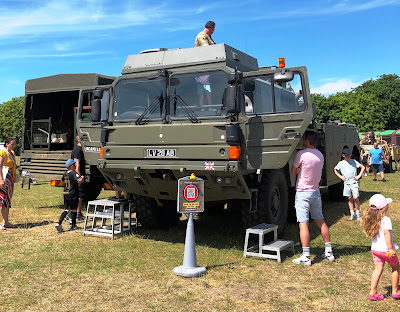Some time ago I decided that I was going to concentrate my wargaming efforts of putting together a number of 15mm imagi-nation armies. I chose the historical setting for these imagi-nations to be vaguely ten years either side of 1900, in other words, during La Belle Époque (the Beautiful Epoch).
This was a period characterised by general economic prosperity, colonial expansion, and technological and scientific innovation. Amongst the latter were the development of the motor vehicle, the telephone, early aircraft, and medical advances in the fields of germ theory of disease, bacteriology, and X-ray photography.
It was also a period of change for the various armed forces of the world. On land, the era saw the widespread introduction of magazine rifles with smokeless powder cartridges, the growing use of effective systems to reduce the recoil of artillery pieces, the issuing of heavy, long-range artillery that could accompany armies in the field, the development of more effective high explosives and propellent powders, and the development of automatic machine guns.
At sea, the navies of the world were also undergoing a period of rapid change. This incorporated the move from iron to steel as the main shipbuilding material, the introduction of better armour protection, the improvement in the powerplants fitted to warships, the increased calibre and barrel length of the main armament carried by battleships, the maturing of the torpedo as a weapon of war, the introduction of submarines, and the introduction of quick-firing guns.
These advances can clearly be seen when one compares the characteristics of HMS Trafalgar, which was first commissioned in 1890, with HMS St Vincent, which was commissioned twenty years later.
HMS Trafalgar
-
Displacement:12,590 tons
- Dimensions:
- Length:345ft (105m)
- Beam:73ft (22m)
- Draught 28ft 6in (8.69m)
- Propulsion: 2-shaft Humphries triple expansion engines producing 7,500ihp
- Speed: 15.1 knots
- Complement: 577
- Armament:
- 2 × 2 BL 13.5-inch (343 mm) 67-ton guns
- 6 × 1 QF 4.7-inch (120-mm) guns
- 8 × 1 6-pounder (57 mm) guns
- 9 × 1 QF 3-pounder (47 mm) guns
- 6 × torpedo tubes
- Armour:
- Belt: 20-inches (508mm) amidships; 14-inches (356mm) at the ends
- Forward bulkhead: 16-inches (406-mm)
- After bulkhead: 14-inches (356mm)
- Citadel: 16-inches to 18-inches (406mm to 457 mm)
- Turrets: 18-inches (457mm)
- Conning tower: 14-inches (356mm)
- Battery bulkheads: 4-inches to 5-inches (102mm to 127mm)
- Deck: 3-inchs (76mm)
HMS Trafalgar.
HMS St Vincent
- Displacement: 19,700 tons
- Dimensions:
- Length: 536ft (163.4m)
- Beam: 84ft (25.6m)
- Draught: 28ft (8.5m)
- Propulsion 18 x Babcock & Wilcox boilers powering 2 x sets of Parsons direct-drive steam turbines driving 4 propellers
- Speed: 21 knots
- Complement: 835
- Armament:
- 5 × 2 12-inch (305mm) guns
- 20 × 1 4-inch (102mm) guns
- 3 × 18-inch (450mm) torpedo tubes
- Armour:
- Belt: 8-inches to 10-inches (203mm to 254mm)
- Deck: 0.75-inches to 3inches (19mm to 76mm)
- Turrets: 11-inches (279mm)
- Barbettes: 9-inches to 10 inches (229mm to 254mm)
HMS St Vincent.
This was also the era during which the first practical aircraft took to the skies. It is generally accepted that the Wright brothers made a successful flight of 17th December 1903, although there were several other pioneers who have laid claim to this honour. These include Samuel Pierpoint Langley, Karl Jatho, and Richard William Pearse.
The Wright Flyer was a primitive aircraft, but each subsequent model had improved power, range, and load-carrying.
The Wright Flyer.
By 1910, Louis Bleriot had flown an aircraft that he had designed across the English Channel, Hugo Junkers had obtained a patent for a thick winged, all-metal aeroplane, the Imperial German Navy and the French Army had formed air arms, and experiments had been carried out in the United States and Germany to see if aircraft could be used as bombers or armed with a machine gun.
Samuel Franklin Cody's 1910 Michelin Cup Biplane.1910 Michelin Cup Biplane.
Samuel Franklin Cody's name was originally Samuel Frankline Cowdery ... and his family name may well have a similar root to my own in Normandy, France.
One of his great-great-grandsons is the BBC World Affairs Editor John Simpson whose full name is John Cody Fidler-Simpson.


















































.jpeg)
























